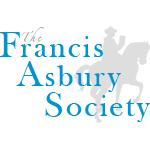Scripture reading: I Corinthians 2:1–8
The Bully Pulpit
God was pleased through the foolishness of what was preached
to save those who believe. (I Corinthians 1:21)
In the novel Moby Dick, Herman Melville devoted three chapters to a detailed description of a worship service at the Whaleman’s Chapel of New Bedford, Massachusetts. Entitled “The Chapel,” “The Pulpit,” and “The Sermon,” these chapters are rich in imagery and set the background for understanding the entire narrative. Ishmael, the main character, quietly slipped in the chapel and found a pew near the door. He was looking for divine reassurance before setting out to sea with Captain Ahab on the whaling ship Pequod. Like most churches in New England in those days, the pulpit was a lofty one. Access to the sacred desk was possible only by means of a rope ladder. When the time came for the sermon, Father Mapple, the saintly pastor, stood and walked toward the pulpit.
Halting for an instant at the foot of the ladder, and with both hands grasping the ornamental knobs of the man-ropes, Father Mapple cast a look upwards, and then with a truly sailor-like but still reverential dexterity, hand over hand, mounted the steps as if ascending the main-top of his vessel.
Once inside his lofty perch, Father Mapple leaned over the edge and pulled up the rope ladder, storing it neatly away in his impregnable little fortress. He then preached a powerful sermon on Jonah, the disobedient prophet. It was a message of sin, punishment, repentance and deliverance. No one who heard the Word that day was unaffected.
But it wasn’t just the sermon that impacted young Ishmael. Plaques hanging on the wall gave the names and ages of those lost at sea. And a large mural depicting a ship struggling valiantly in a storm also captured his attention. But the most dramatic feature of the little chapel was the shape of the pulpit itself, its symbolism not lost on Ishmael. The Bible rested squarely on the foremost point of the pulpit which was carved to resemble the bow of a ship. Indeed, Melville made sure it was not lost on any of his readers either.
What could be more full of meaning?—for the pulpit is ever this earth’s foremost part; all the rest comes in its rear; the pulpit leads the world. From thence it is the storm of God’s quick wrath is first descried, and the bow must bear the earliest brunt. From thence it is the God of breezes fair or foul is first invoked for favorable winds. Yes, the world’s a ship on its passage out, and not a voyage complete; and the pulpit is its prow.
Today, few churches resemble Whaleman’s Chapel, and I’ve never seen a pulpit shaped like the prow of a ship. And yet Melville got it right: the preaching of the Word is the theological center of the church . . . and the world! The Bible defines who we are, what we believe, and how we should behave. Our identity, our beliefs, and our actions are formed by the living Word of God. This is not a liturgical option of secondary significance. It is central to all we believe. The pulpit leads the world.
As God can send a nation or people no greater blessing than to give them faithful, sincere, and upright ministers, so the greatest curse that God can possibly send upon a people in this world is to give them over to blind, unregenerate, carnal, lukewarm, and unskilled guides. —George Whitefield
point to ponder • Is the prow of the ship of your church (the pulpit) headed in the right direction?
prayer focus • Pulpits and preachers across the world.
